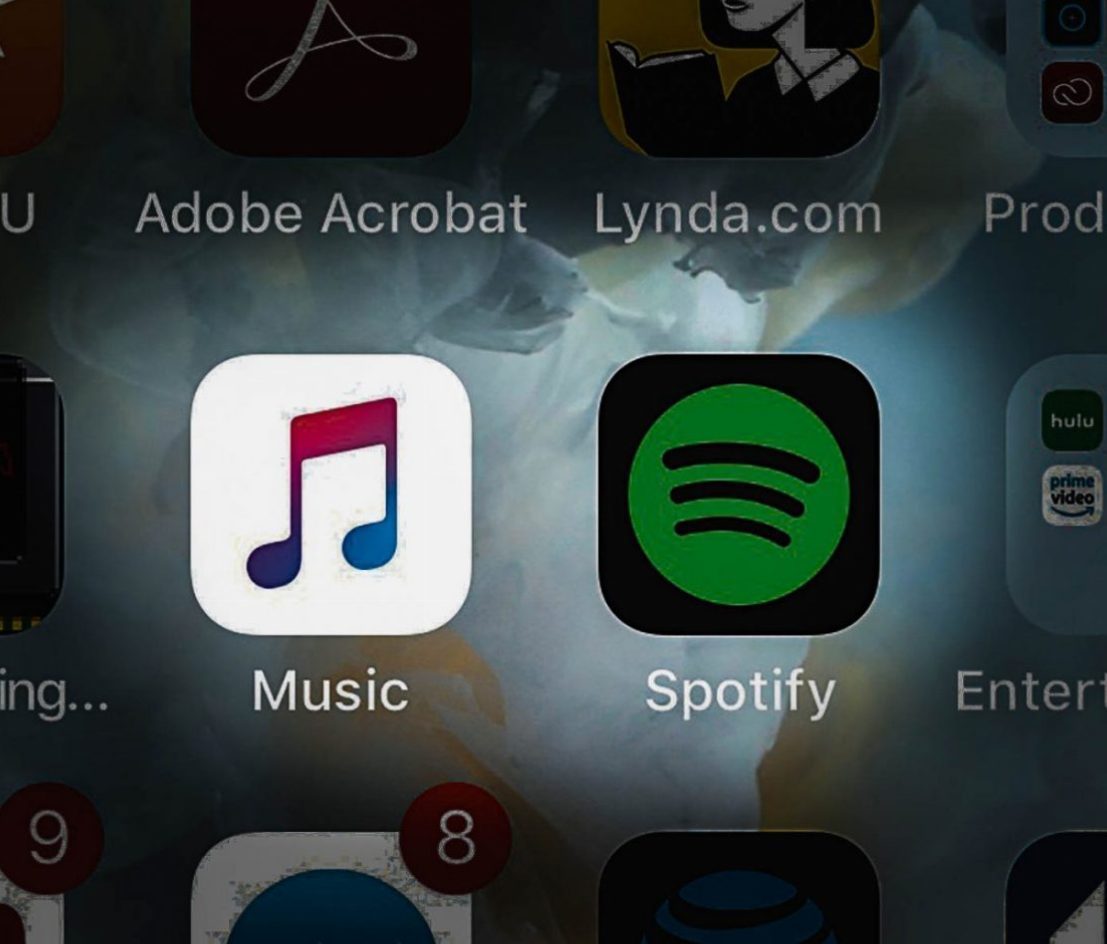Spotify transcends traditional streaming, adapts to listener trends
We are living in a golden age of music access. All the music in the world is virtually at our fingertips for less than $10 a month thanks to modern streaming services.
If you are a fan of music in any capacity, you have inevitably been exposed to or even encouraged to partake in the great streaming service debate of the century: Spotify vs. Apple Music. In the eyes (or ears) of millions– 180 million to be precise, Spotify reigns supreme. Not only does Spotify lead in the number of paying subscribers (83 million), but it also leads in overall content and features, which are constantly being updated.
We all know that music taste is a fluid entity. Spotify moves with it, making the process of discovering new music less daunting. The service learns from your listening habits over time, tailors playlists to fit your ever-shifting preferences and supports an expanding library.
Spotify’s Discover Weekly feature, a personalized 30-song playlist updated every Monday, is a prime example of this. Carefully curated through an algorithmic filtering process, Spotify is able to profile each user’s individual taste in music using a technology called Echo Nest. It analyzes listening history to get an idea of genre preferences. These formed “taste maps” account for the core of Discover Weekly’s success.
Spotify also has an entire Discover page that makes recommendations based on artists you listen to frequently. For instance, if you listen to, say, Dr. Dog often, Spotify might recommend bands like Fruit Bats or Local Natives in the Similar Artists tab.
The latest record releases, exclusive live sessions and new singles can all be found in the New Releases tab. Similar to the New Music Friday’s feature, you are connected to the freshest content from both popular and rising artists. Not to mention, your six Daily Mixes which groups familiar songs and artists by genre.
If you happen to like podcasts, Spotify has you covered. Numerous podcasts can be saved to your library and even added to playlists alongside your music.
If you like concerts, you’re in luck: Spotify will show you upcoming concerts nearby based on your listening habits. Radio and mood-focused mixes are also available through this streaming service, only adding to its versatility.
Spotify’s social component is far superior to Apple’s. You are able to follow friends and see what they are listening to in real time under the social tab. Along with sharing and recommending playlists with each other, you can collaborate in playlist-making. There is also the option of publishing your listening history on Facebook, introducing a new world of opportunity for social interaction.
At times, it seems that Spotify knows your musical preferences better than yourself, and better yet, introduces you to parts of your music taste that you weren’t previously aware of. Spotify is multifaceted and redefines streaming by transcending the traditional. Apple Music trails behind as Spotify continues to evolve and diversify.
Apple Music generates personalized music discovery, offers vast catalog
It’s crazy to me that people still think Spotify Premium is better than Apple Music.
There’s no contest. Apple Music’s simple, sleek, user-friendly design separates it from all other music streaming apps; making it the superior music streaming service.
Everybody claims that Spotify is better for music discovery. Apple Music does it much better.
When users first join Apple Music, they fill out a survey that asks them for their favorite genres and artists. From the start, the app learns your music tastes from those answers to start recommending music you’ll love. Users can also delete artists and genres that they don’t follow regularly. Now, that one popular song you like doesn’t throw off what is recommended to you.
Apple Music also has a whole page called “For You,” that’s all about music you’ll love. There are only three discovery playlists, instead of seven. They are the “New Music Mix,” “Favorites Mix” and “Chill Mix.” They’re 25-songs-long and about an hour and a half each– all with information that Apple thinks is relevant to you, like song lyrics to sing along with.
They also highlight five general playlists, four sets of four albums and six artist-specific playlists every day, and that’s it. It’s all music that you will actually want to listen to instead of what’s popular in the app. Spotify is like Netflix; there are two or three recommended lines of content you might watch, but you mostly get too many lines of content you would never watch.
Apple also knows that music discovery is not everyone’s thing, so the first page when you open the app is your personal library. You never have to see a recommended playlist or ever be on the “For You” page.
Apple Music’s two-library-system makes it easier to sort and find your saved music, downloaded or not. From the main page, you can see everything side-by-side. All the music that is in your cloud and downloaded library are on the same page, then there’s a tab devoted to your downloaded music. Users can also edit the list to sort their libraries by genre, along with the usual album, artist and song sorting.
Love music videos? Apple Music loves them too. You can find any artist’s music videos and save them to your library. This app blended the best of YouTube and Spotify for music lovers.
Apple Music has three convenient features that make the app more user-friendly. Users can search their library, making it easier to find exactly what they’re looking for. Siri, which helps users find and add music to their queue. And users can search by song lyrics; so that one line that is stuck in your head can easily be found on Apple Music.
Apple Music’s user interface music discovery and music videos make the app a giant step above Spotify, and honestly, separates it from all other music streaming apps. Sorry that Apple does everything better, don’t @ me.
